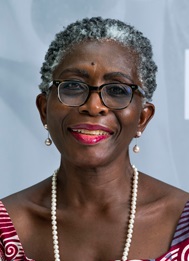
AfCFTA: 100 days since start of free trading, prospects seem bright

By Kingsley Ighobor
On 1 January 2021, some 100 days ago this month, free trading officially commenced under the African Continental Free Trade Area (AfCFTA). Four days later, two Ghanaian companies became pioneer exporters of products using the AfCFTA preferences, marking a major milestone in the short but eventful history of the trade pact.
Alcoholic product manufacturers Kasapreko airfreighted a container-load of goods to South Africa, while Ghandour Cosmetics shipped by sea items to Guinea.
An event organized by the Ghanaian government to celebrate the first consignments of products exported under the AfCFTA conveyed much more than a perfunctory or historical symbolism, for several reasons.
Firstly, the conception, birthing, and now implementation of the AfCFTA continue to unfold with remarkable speed.
Negotiations spanning more than five years led to the signing of the trade agreement on 21 March 2018; it entered into force on 30 May 2019; free trading began on 1 January 2021 after a six-month delay following the COVID-19 outbreak.
First shipment
And then, the first shipments took place on 4 January 2021.
Secondly, Africa’s free trade area represents a decisive step toward the continent’s long-held regional integration aspiration.
Thirdly, the start of free trading rekindles hope in Africa’s post-pandemic recovery. The Secretary General of the Accra-based AfCFTA Secretariat, Wamkele Mene, emphasized throughout these past 100 days—and before then—that effective implementation of the trade pact is the post-pandemic stimulus Africa needs.
“Increased intra-African trade is what will drive economic development post-COVID-19,” Mr. Mene told Africa Renewal in an earlier interview.
The AfCFTA establishes a single market for made in Africa goods and services, eliminates tariffs by 90 per cent and tackles non-tariff barriers such as customs delays.
A unified market of 1.2 billion people with a combined GDP of $3 trillion is potentially a strong foundation for industrialization. Currently intra-African exports stand at about 17% of total continental exports. Increasing this share is expected to increase value addition, help create jobs and boost incomes.
Mr. Mene has devoted considerable time and energy superintending a successful takeoff of free trading. He has been ubiquitous in Africa’s state capitals, from Niamey in Niger, to Addis Ababa in Ethiopia, Lome in Togo, Khartoum in Sudan and others, meeting with political and business leaders, youth and women traders, touting AfCFTA’s benefits, entreating traders to seize the opportunity, and highlighting solutions to emerging challenges.
He continues to promote the agreement with eloquent aplomb—with urgency and ardency.
“We are not going to get another opportunity to integrate; this is our last opportunity,” he said at a press briefing in January.
“There is not a single African country that can work alone to trade its way out of poverty,” he opined at an event in New York just last month.
While in New York, together with Ambassador Fatima Kyari Mohammed, the Permanent Observer of the African Union (AU) to the UN and Ms. Ahunna Eziakonwa, the Director of the UN Development Programme’s Regional Bureau for Africa, Mr. Mene signed an MOU.
The MOU relates to UNDP’s support for, among others, the AfCFTA in strengthening the capacities of national customs authorities, digitizing intra-African trade and enhancing export readiness of women- and youth–led SMEs.
The optimism heralded by the start of free trading aside, 36 AU member states have so far deposited their ratification instruments.
Countries ratifying the agreement can trade with each other based on their tariff concessions and proposed rules of origin. Currently, about 90% of the rules of origin are in, while the remainder is expected before the end of July 2021.
Meanwhile, just three countries—Ghana, South Africa and Egypt—had established the necessary customs infrastructure for trading at the start of free trading last January.
However, the Council of Ministers, one of AfCFTA’s decision-making bodies, approved for countries not yet able to meet the customs requirements to set up escrow accounts to reimburse traders operating under AfCFTA preferences. The move demonstrated AfCFTA’s nimbleness in solving teething problems.
Negotiations on protocols
The free trade anchor agreement aside, negotiations on protocols are ongoing. Phase I negotiations, which relate to the protocols on trade in goods and services and dispute settlement, are to be concluded before the end of June 2021.
The timeline for the conclusion of Phases II negotiations on protocols on investment, intellectual property rights, competition and e-commerce, is the end of 2021.
While protocols lubricate the wheel of AfCFTA’s operations, Mr. Mene doesn’t believe that the current lag between ratification and countries’ effective participation in free trading slowed by, for example, a lack of customs infrastructure, is a cog in that wheel.
“Tell me where every country in a trade agreement is ready at the same time, where every country is ready on day one?” he asked rhetorically at the January briefing.
He is correct. The EU common market was conceptualized in 1950; yet countries such as Bulgaria and Romania only became members in 2007—57 years later.
By comparison, 54 AU member states (Eritrea is the only holdout) are parties to the trade agreement, and ratifications continue at an impressive pace.
The AfCFTA Secretariat has also been busy coordinating with the African Export and Import Bank (Afreximbank), a pan-African multilateral financial institution, to implement the Pan-African Payment and Settlement System (PAPSS) project, which should tackle difficulties of multi-currency convertibility.
Afreximbank is providing $500 million to PAPSS for clearing and settlement in the West African Monetary Zone (WAMZ). The pilot for the WAMZ project will begin in April, while full implementation will launch in June 2021.
Afreximbank hopes to inject up to $3 billion to support an Africa-wide PAPSS project.
“There are 42 currencies in Africa. We want to make sure that a trader in Ghana can transfer Ghanaian cedi to a counterpart in Kenya who will receive Kenyan shillings,” says Mr. Mene.
Despite obvious challenges, the coming months will likely witness a convergence of fruitful outcomes of multiple moving parts. Successful negotiations of the remaining protocols, more ratifications, countries’ customs infrastructure readiness, PAPSS implementation, digital app active use, and so on—successes in these areas and more will bring enormous tangible benefits.
In sum, more good news could be in the pipeline.
For more information on COVID-19, visit www.un.org/coronavirus
Africa Renewal













































